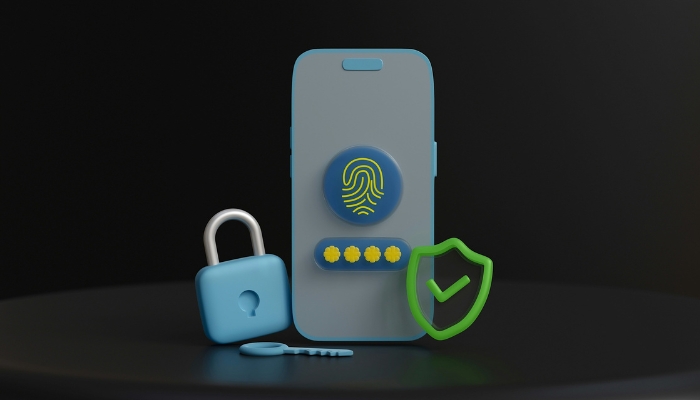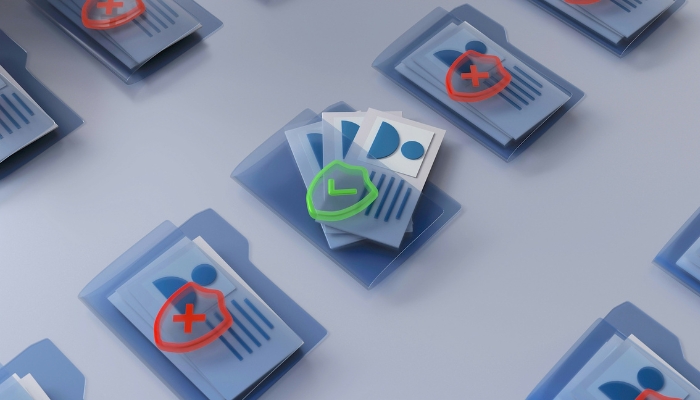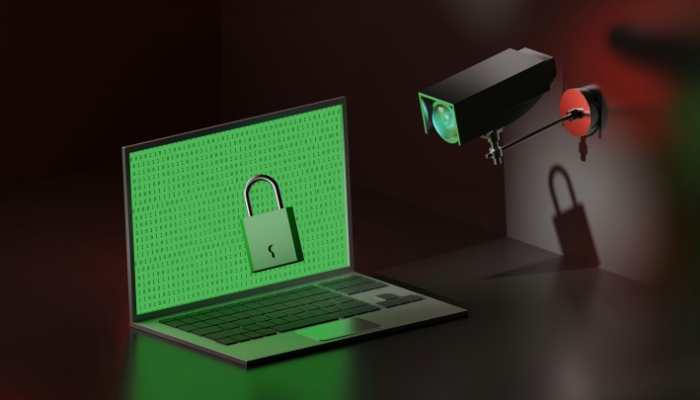
In the interconnected digital realm, the security of one’s email account is paramount, yet the methods by which hackers obtain email passwords remain a mystery to many. Unpacking these methods, which range from phishing schemes to exploiting unsecured Wi-Fi networks, offers comprehensive insight into the anatomy of these cyber threats.
Hackers acquire email passwords through methods like phishing attacks, where they trick users into revealing their credentials, and brute-force attacks, which involve guessing passwords. They also use credential stuffing, exploiting reused passwords across different accounts, and deploy malware to capture keystrokes. Awareness of these tactics is key to protecting email accounts from unauthorized access.
Moreover, this discussion about how do hackers get email passwords could potentially underscore the importance of proactive measures in maintaining email security. So, what mechanisms do hackers employ to infiltrate your email account, and how can you defend against them?
Understanding the Basics of Hacking
While it is a complex field with numerous methodologies, understanding the basics of hacking is key to comprehending how hackers obtain email passwords. Hackers generally use a range of techniques to gain unauthorized access to email accounts. These techniques often involve the use of malicious software, phishing attacks, social engineering attacks, and brute-force attacks.
Malicious software, or malware, including those where email attachments contain malware, is designed to infiltrate or damage a computer system without the owner’s informed consent. Hackers often use malware to steal email credentials from unsuspecting users. This can be achieved through keylogging, where every keystroke a user makes is recorded, including when they type in their email password.
Another common method is through phishing attacks, where hackers trick users into giving up their email credentials. This is often accomplished by sending an email that appears to be from a trusted source, but is actually a fraud. The email usually contains a link that directs the user to a fake website where they are asked to enter their email credentials.
Social engineering attacks involve manipulating individuals into divulging confidential information. In the context of hacking, this often involves tricking users into revealing their email passwords. Lastly, in brute-force attacks, hackers systematically check all possible passwords until the correct one is found. This method can be time-consuming and requires sophisticated software.
The Phishing Technique Explained

Expanding upon the aforementioned methods of hacking, phishing stands out as a particularly deceptive technique, employing clever manipulation and misdirection to exploit unsuspecting email users. The phishing technique relies on the creation of fake websites and the sending of suspicious emails, which are designed to look like they originate from a trusted source.
A phishing email often creates a sense of urgency, compelling the receiver to act quickly, either due to a security threat or a reward. The receiver is typically directed to a counterfeit website via a link in the phishing email. These websites are carefully designed to mimic legitimate ones, fooling the user into entering their personal information, including email passwords.
Hackers, exploiting human error and deception, are then able to harvest these email passwords and use them for their illicit activities. The success of phishing relies on the user’s inability to discern the legitimacy of the email and the website. This is why it is crucial for users to scrutinize emails and websites, especially those asking for sensitive information. The smallest detail can make a difference in detecting and avoiding a phishing attack.
Keyloggers: Silent Password Thieves
Another stealthy method employed by hackers to obtain email passwords is the use of keyloggers, malicious software designed to silently record every keystroke on a victim’s keyboard. These digital thieves operate in the background, unbeknownst to the unsuspecting user, capturing sensitive information such as login credentials and email addresses.
To illustrate how keyloggers work, consider the following scenario:
- An unsuspecting user downloads and installs a seemingly harmless program, which secretly contains a keylogger.
- Once installed, this keylogger starts recording every keystroke made by the user, including those entered on password fields of online accounts.
- The collected data, which may include usernames, passwords, and email addresses, are then sent back to the hacker.
A good line of defense against keyloggers is the use of a password manager. These tools, instead of typing, automatically fill in your login credentials, thereby circumventing any keylogger’s recording attempts. However, the best defense remains a robust antivirus software that can detect and remove these stealthy invaders.
Understanding, thwarting keyloggers, and searching who hacked email when anomalies are detected, are crucial steps in safeguarding your digital life, particularly your email and other online accounts.
Breach Exploitation and Its Implications

How does breach exploitation factor into the complex landscape of email hacking, and what are its far-reaching implications?
Breach exploitation is a critical component, often resulting from the ill-advised use of weak passwords or common passwords across multiple email accounts.
When data breaches occur, hackers gain access to a wealth of information, including email account details. These breaches often expose weak passwords that users have unwisely chosen due to their simplicity and memorability. This information lays the groundwork for hackers to exploit these vulnerabilities, gaining unauthorized access to other email accounts that use the same passwords.
The implications of breach exploitation are profound and far-reaching. Beyond the immediate privacy invasion, this can lead to significant financial and reputational damage. It also poses a substantial risk to email service providers, who may lose user trust and face potential legal consequences as a result of these security failures.
The Role of Malware in Hacking
While breach exploitation represents a significant threat in the realm of email hacking, the use of malicious software, or malware, offers an equally potent tool in the hacker’s arsenal. Malware attacks are increasingly becoming a common tool for hackers to get unauthorized access to email accounts.
Malware can essentially function as a digital lockpick, exploiting vulnerabilities within systems and providing hackers with the keys to your personal data. Listed below are three ways in which malware plays a crucial role in email hacking:
- Malware Infiltration: Malicious programs are designed to infiltrate your systems subtly, often disguised as legitimate software. They can log keystrokes, capture screenshots, or even record video to acquire sensitive information, like email passwords.
- Antivirus Program Exploitation: Sophisticated malware can evade detection by antivirus programs. Some can even disable the antivirus program, leaving the system vulnerable to further attacks.
- Security Solution Bypass: Advanced malware can bypass digital security solutions, such as firewalls and secure email gateways, to gain access to user’s email accounts.
Understanding these aspects underscores the importance of robust malware protection as an integral part of any comprehensive security strategy.
Social Engineering and Its Effectiveness
In the realm of cybercrime, few tactics are as insidiously effective as social engineering, a technique that manipulates individuals into divulging confidential information. Social engineering techniques exploit the human element of security, bypassing traditional security measures to gain unauthorized access to systems and data.
Common tactics include phishing scams, where hackers send bogus emails that seem to be from reputable sources, tricking recipients into revealing login credentials. The effectiveness of these social engineering tactics lies in their ability to prey on human psychology, exploiting trust and fear to encourage compliance.
The potency of social engineering lies in its simplicity and effectiveness. Unlike more technical hacking methods, it does not require extensive knowledge of computer systems or networks. Instead, it relies on well-crafted deception and manipulation, making it a tool of choice for many cyber criminals.
In the digital age, where data is the new oil, social engineering poses a significant threat. Despite advancements in cybersecurity, the human element remains the weakest link, making social engineering a highly effective method for hackers to gain access to email passwords. Understanding and recognizing these tactics is the first step in protecting oneself against these insidious attacks.
The Threat of Brute Force Attacks
Hackers use brute force attacks, a formidable and relentless trial-and-error approach, to compromise email security. They systematically examine all possible combinations in this method until they identify the correct password. This method, albeit time-consuming and resource-intensive, is particularly effective when dealing with weak or simple passwords.
Brute force attacks pose a significant threat to email security, especially if users fail to implement strong password practices. Below are three fundamental aspects of a brute force attack:
- Exhaustive Key Search: This strategy involves trying every possible password combination to crack the password. The more complex and lengthy the password, the longer it takes to crack password combinations.
- Dictionary Attack: This variant of brute force attack uses a pre-arranged listing of words found in a dictionary, rather than random combinations. If your password is a common word, it’s more susceptible to a dictionary attack.
- Hybrid Brute Force Attack: This technique combines dictionary attacks with guesses to crack passwords. It might append numbers or symbols to dictionary words to guess a strong password.
In essence, the threat of brute force attacks underscores the importance of creating unique, complex passwords to bolster email security.
Email Spoofing: A Common Hacker’s Tool
Deceptively masquerading as trustworthy entities, hackers frequently exploit email spoofing—a tactic that falsifies an email header so the message appears to originate from someone other than the actual source. This form of email hacking is often used in conjunction with phishing scams, where the aim is to trick the recipient into revealing sensitive information, such as their email password.
The methodology behind email spoofing involves the manipulation of the email header’s ‘from’ field, making the email appear to come from a legitimate source. The recipient is led to believe that the email is from a trusted entity—like a bank or a well-known company.
An email scam utilizing spoofing often contains official-looking emails, complete with logos and formatting, replicating the legitimate source’s style. The message usually prompts the recipient to ‘verify’ or ‘update’ their information, leading them to a fake website designed to harvest their details.
Unsecured Wi-Fi Networks and Their Risks

Unsecured Wi-Fi networks serve as fertile hunting grounds for hackers seeking to intercept and exploit users’ email passwords. Such networks, often found in public spaces, lack the security measures necessary to prevent unauthorized access. The lack of a network switch, for example, makes any data transmitted over an unsecured network vulnerable to interception.
There are three primary ways these networks can be exploited:
- Eavesdropping: Hackers can monitor network traffic and capture information, including email passwords, transmitted over an unsecured Wi-Fi network. They can do this by tracking an IP address or using a ‘sniffer’ application.
- Man-in-the-middle attacks: This type of attack occurs when a hacker interjects himself into a network connection, intercepting and altering communication between two parties without their knowledge. This can enable them to gain unauthorized access to sensitive information, including email passwords.
- Evil twin attacks: In this scenario, a hacker sets up a fraudulent Wi-Fi network that mimics a public Wi-Fi network. Unsuspecting users connect to this network, exposing their data to the hacker.
Preventive Measures to Keep Your Email Safe
In the face of growing cybersecurity threats, implementing robust preventive measures becomes paramount to safeguarding your email communications from unauthorized access and exploitation. The first step is choosing email providers known for their stringent security measures. Opt for providers that offer two-factor authentication and encryption, as these fortify password security.
Secondly, ensure that your password is robust, non-deductive, and unique. Regularly updating your password can also make it difficult for hackers to gain access. Using a reputable password manager can help in maintaining robust password security.
Further, installing security software such as antivirus software is crucial. These applications routinely scan your system for malware that hackers could use to steal your password. Remember, always download such software from a legitimate service to avoid inadvertently installing malicious software.
Conclusion
Hackers employ a range of sophisticated techniques to pilfer email passwords. These techniques include phishing, keyloggers, malware, brute force attacks, and email spoofing. Moreover, they exploit security breaches and unsecured Wi-Fi networks.
However, adhering to preventive measures can significantly bolster email security. Comprehending these methods is vital in the ongoing battle to safeguard personal information in the digital age.
FAQs: How Do Hackers Get Email Passwords
How can I create a strong password that’s hard to crack?
Creating a strong password is crucial for securing your online accounts. A robust password combination should include a mix of uppercase letters, lowercase letters, numbers, and symbols. Avoid common passwords and personal details that are easy to guess. Using a password manager can help generate and store complex passwords, enhancing your password security.
What are phishing attacks, and how can I avoid them?
Phishing attacks are deceptive attempts to steal sensitive information like email passwords and login credentials through convincing emails or fake websites. To avoid them, be wary of suspicious emails asking for personal information or urging you to click on unknown links. Always verify the authenticity of email addresses and avoid sharing sensitive details via email. Using security software that flags phishing scams can add an extra layer of protection.
Is two-factor authentication necessary for my email accounts?
Absolutely. Two-factor authentication (2FA) or multi-factor authentication adds an additional layer of security to your email accounts. Even if someone manages to guess your password, they won’t be able to access your account without the second verification step, which usually involves a security code sent to your phone or email address. This method significantly reduces the risk of email hacks and identity theft.
How do brute-force attacks work, and how can I protect against them?
Brute-force attacks involve hackers trying numerous password combinations to gain unauthorized access to an account. They often use automated software to generate a wide range of guesses. To protect against these attacks, use strong passwords and avoid weak passwords that are easy to guess. Regularly updating your passwords and using a password manager can also help. Additionally, many email service providers have security measures in place to detect and block brute-force attacks.
What should I do if I connect to a public Wi-Fi network and need to access my email accounts?
When using a public Wi-Fi network, it’s essential to be cautious, as these networks are often less secure and can expose you to man-in-the-middle attacks. If you need to access your email accounts or any other sensitive online service, use a virtual private network (VPN) to encrypt your network connection. This creates a private network even on public Wi-Fi, safeguarding your login details and email credentials. Additionally, avoid accessing financial accounts or conducting online shopping on public Wi-Fi to prevent identity theft and protect your digital life.